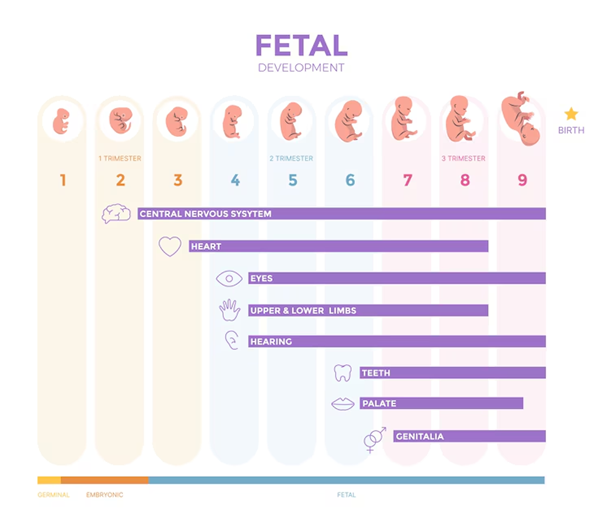Fetal Biophysical Profile

A Fetal Biophysical Profile (BPP) is a comprehensive assessment used to evaluate the well-being of a fetus during pregnancy. This test combines ultrasound imaging with fetal heart rate monitoring to assess multiple parameters of fetal health, providing a detailed picture of the fetus’s condition in the womb.
Components of the Biophysical Profile
The BPP typically includes five key components, each of which is scored to give an overall picture of fetal health. These components are:
- Fetal Heart Rate (Non-Stress Test)
- Fetal Breathing Movements
- Fetal Movement
- Fetal Tone
- Amniotic Fluid Volume
Fetal Heart Rate (Non-Stress Test)
The non-stress test (NST) monitors the fetal heart rate and its response to fetal movements. A healthy, active fetus will show a normal pattern of increased heart rate with movements. The NST is usually conducted by placing a belt with sensors around the mother’s abdomen, which records the fetal heart rate over a period of time.
Fetal Breathing Movements
Fetal breathing movements are assessed via ultrasound to determine if the fetus is practicing breathing. Although fetuses do not breathe air, they move their chest muscles and diaphragm to prepare for breathing after birth. These movements should be observed for at least 30 seconds within a 30-minute observation period to be considered normal.
Fetal Movement
The ultrasound also monitors the general movements of the fetus. A healthy fetus will move its limbs and body multiple times during the observation period. Typically, the fetus should make at least three distinct body or limb movements within 30 minutes.
Fetal Tone
Fetal tone refers to the flexion and extension of the fetus’s limbs and trunk. This component assesses whether the fetus can perform fine motor movements such as opening and closing a hand or flexing and extending the arms and legs. At least one episode of active extension with return to flexion is required for a normal score.
Amniotic Fluid Volume
The amount of amniotic fluid is measured using ultrasound to ensure there is an adequate cushion around the fetus. This is assessed by measuring the largest pocket of amniotic fluid in the uterus. Adequate fluid levels are crucial for fetal development and movement.
Scoring and Interpretation
Each component of the BPP is scored on a scale of 0 to 2, with a maximum total score of 10. A score of 8-10 is generally considered normal, indicating a low risk of fetal asphyxia. Scores of 6 or below may suggest potential issues, requiring further evaluation and possible intervention. A score of 4 or less is concerning and often indicates the need for immediate medical attention.
Clinical Applications
Monitoring High-Risk Pregnancies
The BPP is particularly useful in monitoring high-risk pregnancies, including those with conditions such as preeclampsia, gestational diabetes, or intrauterine growth restriction (IUGR). It helps to ensure that the fetus is receiving adequate oxygen and nutrients.
Decision-Making for Delivery
The results of the BPP can influence decisions about the timing and method of delivery. For example, a low BPP score may lead to recommendations for early delivery to prevent complications.
Advantages of Fetal Biophysical Profile
The BPP is a comprehensive and non-invasive test that provides valuable information about fetal well-being. By combining multiple parameters, it offers a detailed assessment that can guide clinical decisions and improve pregnancy outcomes.

